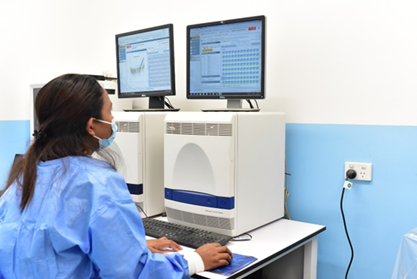Country-based influenza pandemic preparedness is essential to prevent and prepare for the global spread of influenza viruses. Pandemics can lead to widespread illness, significant mortality, and substantial economic impacts due to healthcare expenses and loss of productivity. Through the concerted efforts of Member States, WHO, partners and investments from the Pandemic Influenza Preparedness Framework (PIP) Partnership Contribution (PC) and other sources, all 11 countries in the WHO South-East Asia Region (SEAR) now have a WHO-recognized national influenza centre (NIC). This significant accomplishment strengthens laboratory capacity in line with the objectives of the Global Influenza Strategy (2019-2030).The Global Influenza Strategy emphasizes the critical need to build strong national capacities, prioritizing laboratories to improve pandemic influenza preparedness and strengthen International Health Regulations (IHR) (2005) core capacities. Given that NICs are the backbone of the WHO’s Global Influenza Surveillance and Response System (GISRS), the region set and has now achieved its target to establish a WHO-recognized NIC in each SEAR Member State.Building a regional networkIn 1952, India began building its influenza laboratory capacity, which coincided with the founding of GISRS. By the 1970s, WHO-recognized NICs were operational in India (1977), Indonesia (1976) and Thailand (1972). At the onset of the 2009 influenza pandemic, seven Member States (63%) had a NIC, with the NICs in India, Indonesia, Sri Lanka and Thailand supporting the four countries that did not have their own NIC.The National Public Health Laboratory in Nepal was recognized by the WHO in 2010. In 2019, recognizing the critical role of NICs, the Regional Office aimed to designate and achieve WHO recognition for public health laboratories in the remaining three Member States (Bhutan, Maldives and Timor-Leste). WHO organized and coordinated external assessments of these public health laboratories, identifying key gaps in workforce competence, laboratory quality management, specimen transportation, documentation of laboratory activities and systematic equipment management.To address these gaps, these three NICs worked closely with WHO, WHO Collaborating Centres at the United States Centres for Disease Control and Prevention (US CDC), and the Victoria Infectious Disease Reference Laboratory (VIDRL) in Australia to train and mentor senior laboratory staff, thereby enhancing national capacities both in the short and long term. External financial support was provided through the PIP PC and other partners. These collaborative efforts resulted in significant progress, as indicated by subsequent assessments, leading to WHO recognizing the remaining three laboratories as NICs.Sustaining the gains All SEAR Member States are now committed to maintaining high-quality and safe influenza testing. This is achieved through participation in the WHO External Quality Assessment Programme (EQAP), consistent data reporting to WHO, and the regular sharing of influenza viruses. WHO supports these efforts by conducting national and international surveillance reviews, coordinating regional biosafety trainings based on the WHO Laboratory Biosafety Manual, and facilitating training and mentoring at WHO Collaborating Centres. In 2023, a regional consultation brought together all NICs to discuss strategies for strengthening laboratory capacity to ensure the coordinated implementation of an expanded GISRS (e-GISRS) while preserving influenza-specific achievements. These strategies included adopting WHO-recommended standards for the laboratory diagnosis of influenza and engaging in broader consultations with countries. The aim was to define the scope and terms of reference for NICs, reference laboratories and other collaborators, ultimately improving the organization and coordinated implementation of e-GISRS within countries.The concerted efforts of Member States, technical support from WHO and other partners, and sustainable financing through the PIP PC and other sources have significantly improved expertise and infrastructure at NICs. These enhancements have strengthened laboratory capacities for influenza preparedness in the WHO South-East Asia Region, aligning with the goals of the WHO Global Influenza Strategy.Read More


